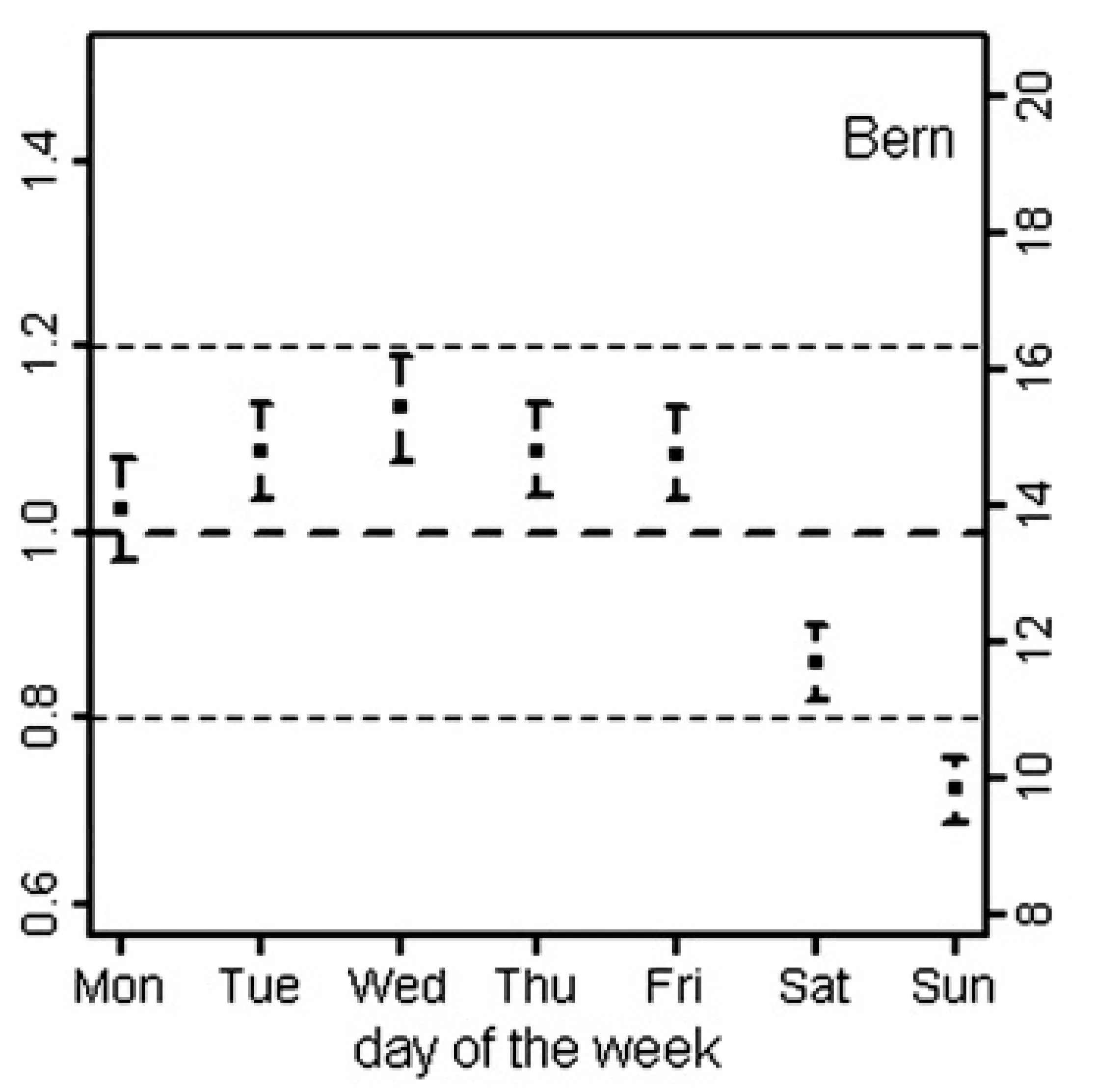BAFU Ozone PM Trends
PM Trends and Variability
Scope of project
Statistical analyses (e.g Generalized Additive Models) of long-term measurements using concentrations of particulate matter (PM10, PM2.5, PM1) to derive the variability of PM as a function of meteorology, season, weekday and their trends.
Key findings
- The average adjusted yearly PM10 trends from 1991-1998 (total 13 stations in Switzerland) for rural, urban background and urban street stations were − 0.37, − 0.53 and − 1.2 µg m−3yr−1 respectively. The adjusted yearly trends for all stations range from − 0.15 µg m−3yr−1 to − 1.2 µg m−3yr−1 or − 1.2%yr −1 to −3.3% yr−1 (Barmpadimos et al., 2011a).
- Most important meteorological influences on PM10 were found to be wind gust, temperature, precipitation and boundary layer depth (Barmpadimos et al., 2011a).
- Ambient concentrations of PMcoarse (PM10-PM2.5) at 7 Swiss stations are higher on weekdays than on Sundays by a factor of 1.53 on average over all urban and suburban sites and by a factor of 1.32 on average over all rural sites (Barmpadimos et al., 2011b)
- The weekend effect is stronger PMcoarse than form PM2.5: The relative increase of coarse mode ambient concentrations on weekdays compared to Sundays was larger than the relative increase of PM2.5 concentrations by a factor of 2.7 on average over all urban and suburban sites, whereas no considerable difference was found at the rural sites (Barmpadimos et al., 2011b).
- The contribution of traffic to coarse mode urban ambient concentrations was estimated to be 53% (34%-78%)on Sundays and 70% (57%-86%) on weekdays (Barmpadimos et al., 2011b).
Publications
Journal Articles
Influence of meteorology on PM10 trends and variability in Switzerland from 1991 to 2008.Barmpadimos, I., C. Hueglin, J. Keller, S. Henne, and A. S. H. Prevot, 2011a
Atmospheric Chemistry and Physics, 11, 1813-1835.
DOI: 10.5194/acp-11-1813-2011
The weekly cycle of ambient concentrations and traffic emissions of coarse (PM(10)-PM(2.5)) atmospheric particles.
Barmpadimos, I., M. Nufer, D. C. Oderbolz, J. Keller, S. Aksoyoglu, C. Hueglin, U. Baltensperger, and A. S. H. Prevot, 2011b
Atmospheric Environment, 45, 4580-4590.
DOI: 10.1016/j.atmosenv.2011.05.068
Thesis
Trends and variability of airborne particulate matter in Switzerland and in EuropeBarmpadimos, Iakovos, November 2011
Collaborations
Laboratory for Air Pollution/Environmental Technology at Empa (Materials Science and Technology), Switzerland
Funding
This work was supported by the Federal Office for the Environment and the COST fund of the Swiss State Secretariat for Education and Research (SER-Nr. C05.0128).



